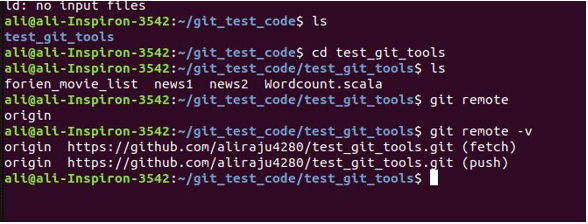

Then we switch back to our main, master branch, assuming your main branch is called master. If you don’t commit your changes to the backup branch, you will lose them. After that, I’ve added in a commit, so that we commit any changes on that backup branch, my-backup-branch, so the contents remain saved. Then, git branch my-backup-branch creates a new branch, which we switch to for the backup. The other commands are to ensure you don’t lose any data, by making a backup!įirst, git fetch -all syncs up our remote to our local. The key command to force a git pull from a remote repository is git reset -hard origin/master.

To force a git pull, we run the following commands to create a backup branch, and then force the git pull on the master branch: If you do not commit/backup your local changes to another branch, they will be overwritten so please be careful. You can also copy your files somewhere else if you’re worried about overwriting them. The important thing to do here is a backup, where you commit all your local changes to a backup branch.
Workign with dev and origin master git free#
Interested in learning more? Sign up for a free account.Have you ever been working on a project in git and ran into an error telling you that you can’t use git pull because you have local changes? error: Untracked working tree file 'App.vue' would be overwritten by merge Using Snyk with GitHubĬontinuously perform security scanning across all the integrated repositoriesĭetect vulnerabilities in your open source components The next time I want to push changes I can just use git push without any parameters. Now the local branch also has a remote counterpart. When I want to push my changes, first I have to use -u or -set-upstream like this: If you’re on a local branch myNewFeature and want to share this branch remotely you have to set the upstream to make it a remote branch. How do I turn my local branch into a remote branch? This can be different, for instance, when you are working with multiple remotes. Note that origin is the standard reference to the original remote repository my project was cloned from.

Your local branch name, myLocalName will be connected to the remote branch remoteName. Git checkout -b myLocalName origin/remoteName If you would check out a remote branch but name it differently on your local machine you can run: This means that there is a local copy of the branch available on your machine. How do I create a local branch from a remote branch?Īfter a fetch, you can check out the remote branch as mentioned earlier. Now all you need to do is use git checkout. This command downloads the references from your remote repository to your local machine, including the reference to the remote branch. If you want to check out a remote branch someone published, you first have to use git fetch. It is good to mention that git checkout remote branch is not an actual existing command. How do I checkout a remote branch?Ī remote branch is the best way to share your development work with other people in your team. It totally makes sense to do this in a separate level branch that originates from your feature branch. This might sound weird, but imagine you are creating a new feature in a new branch and you want to experiment a bit. Knowing this, you can also make a branch from a branch recursively. Note: when you check out a branch on your local machine, all commits will be on the new branch and not on the main. If you want to work in this branch and commit to it, you need to check out this branch just like before using git checkout dev. When you want to create a new branch from your main branch with the name “dev”, for example, use git branch dev-this only creates the branch. If you already have a branch on your local machine, you can simply check out or switch to that branch using the command git checkout.


 0 kommentar(er)
0 kommentar(er)
